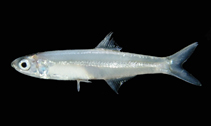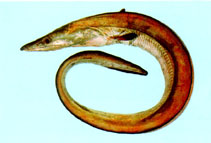Eicosapentaenoic
Macronutrient
Last update date: October 11, 2023
Eicosapentaenoic is an omega-3 fatty acid. It is effective in treating coronary heart disease, high triglycerides (fats in the blood), high blood pressure, and inflammation.
Frequently Asked Questions
1.
What is Eicosapentaenoic?
Eicosapentaenoic acid (EPA) is a type of omega-3 fatty acid, commonly found in cold-water fatty fish such as salmon. It is also present in fish oil supplements, often in conjunction with docosahexaenoic acid (DHA). Omega-3 fatty acids like EPA play a vital role in maintaining a healthy diet and can significantly contribute to reducing the risk of heart disease. Integrating more EPA into your diet can have positive impacts on various aspects of your health, including coronary heart disease, elevated triglyceride levels, high blood pressure, and inflammation.
2.
What is positive impact of Eicosapentaenoic?
EPA offers a range of health benefits: Attention-Deficit Hyperactivity Disorder (ADHD): Some research suggests that EPA may help alleviate symptoms of ADHD in children. Depression: EPA has shown promise in improving symptoms of depression and supporting mental well-being. Heart Disease: Incorporating EPA into your diet can reduce the risk of heart disease by lowering levels of unhealthy cholesterol and triglycerides. Rheumatoid Arthritis: EPA may help reduce inflammation and alleviate symptoms in individuals with rheumatoid arthritis. Menopause: EPA may assist in managing menopausal symptoms and supporting overall health during this life stage.
3.
What is negative impact of Eicosapentaenoic?
While EPA is generally safe when consumed as part of algal oil for up to 12 weeks, it's crucial to be aware of potential risks: Excessive Bleeding Risk: Taking EPA and other omega-3 fatty acids in doses exceeding 3 grams daily can slow down blood clotting, potentially increasing the risk of bleeding. It is advisable to limit daily EPA intake from supplements to no more than 2 grams unless your healthcare provider recommends otherwise.
4.
Who should avoid Eicosapentaenoic?
if you have a history of irregular heartbeats. It is strongly advisable to consult with your healthcare provider before introducing EPA into your diet to assess its potential impact on your heart's rhythm.
5.
What are common sources of Eicosapentaenoic?
EPA is naturally present in several foods, making it accessible through a balanced diet. Some common dietary sources of EPA include: Salmon: Salmon is renowned for its generous EPA content and is a popular choice among those seeking this beneficial fatty acid. Tuna: Tuna, often available in canned form, is another readily available source of EPA. Mackerel: This fish is celebrated for its high EPA concentration and is frequently enjoyed grilled or smoked. Sardines: Whether consumed fresh or canned, sardines are a convenient and EPA-rich option. Shellfish: Various types of shellfish, such as shrimp and crab, contribute to your EPA intake. Herring: Herring, a cold-water fish, is abundant in EPA and finds its way into various culinary dishes.














